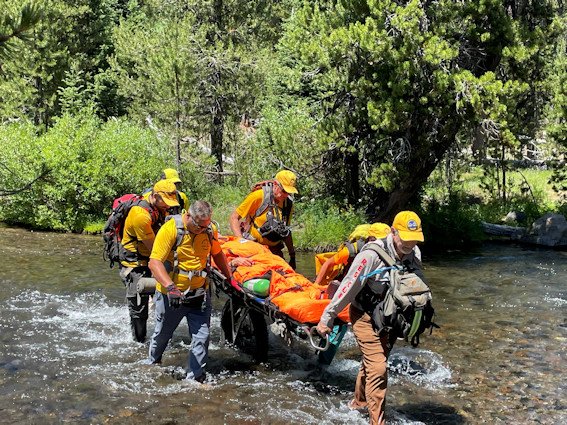June is Oregon’s Search and Rescue Month; state agencies share tips to keep outdoor adventures safe

SALEM, Ore. (KTVZ) — Warmer weather has arrived, and Oregonians are eager to hike, camp, boat, climb and explore. In recognition of Search and Rescue Month, several state agencies are sharing best practices on how to keep outdoor adventures safe for people and Oregon’s scenic landscape.
“Oregon is one of the best places in the world for outdoor adventure, and we want everyone to get outside and discover all the state has to offer,” said Governor Tina Kotek. “And please be safe when you’re out there. We encourage everyone to be prepared for their next adventure so they can stay safe and minimize their impact on the communities they visit.”
On average, more than 1,000 Search and Rescue (SAR) missions are conducted each year in Oregon, and over the last decade, 99% of people needing SAR assistance lived outside the county where they were rescued. Lack of preparedness was often the common denominator.
“Our SAR teams rescue many folks who are often inexperienced, overconfident and unprepared for the reality of the situation,” said State SAR Coordinator Scott Lucas. “We find people who set out for a hike wearing flip-flops and shorts and carrying no water. They might take an unmarked trail, get disoriented or take a fall, and they could be lost for days.”
Whether traveling for a few hours or a week, people should know their physical limits and plan for activities that won’t exceed their experience. Before heading out, the Oregon Department of Emergency Management recommends the following best practices:
- Look up the destination and get familiar with the area.
- Check weather conditions.
- Download maps to a cell phone or print them in case there is no cell service.
- Check Tripcheck.com or call 511 for road conditions.
- Check the Oregon Department of Forestry’s posted public fire restrictions.
- Enable Wireless Emergency Alerts (WEA) on cell phones.
- Bring clothing layers and footwear appropriate for the weather and terrain.
- Pack the proper equipment and extra food, water and supplies.
- Have an emergency kit and cell phone charger in the vehicle.
- Travel with a companion.
- Share travel plans with someone, including the destination and estimated return.
Sunshine and warmer weather lead many people to the water. Anyone near the water should always wear a life jacket. Check the Oregon State Marine Board’s map of life jacket loaner stations to borrow for the day if you don’t have your own. OSMB advocates preparation and planning through its website, which lets people check water levels, obstructions, tide information, local regulations and boating access before they head out.
“Playing in and around the water is a lot of fun, but it comes with risks,” said OSMB Public Information Officer Ashley Massey. “Most incidents and fatalities are caused by falling overboard or capsizing into cold water without a life jacket or the necessary skills for self-rescue. People need to always scout ahead, mind the tide, decide on the safest route and expect the unexpected.”
OSMB also recommends people recreate with others so they can provide aid more quickly if the unexpected happens. In 2022, there were 16 recreational boating fatalities where 10 victims were not wearing life jackets; seven were paddlers operating alone.
The Oregon State Park system is one of the most popular in the U.S. with more than 52 million day-use visits per year, so it’s no surprise it sees an uptick in visitors throughout the summer months. The Oregon Parks and Recreation Department recommends that visitors be aware of campfire restrictions in the summer months and use best practices to keep campfires safe and enjoyable. The agency also encourages anyone visiting the outdoors to get to know and follow the seven principles of Leave No Trace.
“Leave No Trace is a set of actions that can minimize impacts on plants, animals, other people and entire ecosystems,” said OPRD Incident Response Coordinator Jamen Lee. “These seven guidelines boil down to protecting the resources, the things that call the parks home, and all the other people that hope to come and recreate behind you and have that same sense of discovery and excitement. To help a Search and Rescue team provide you with a safe and timely response when you need it most, it's very important that visitors stay on designated trails and pay close attention to park signs and protective barriers when visiting natural areas like the ocean shores or trails."
Oregon’s SAR program supports the broad spectrum of search and rescue operations throughout the state, including coordinating state and federal agencies involved in search and rescue activities and providing on-scene search and rescue efforts when requested. There is no charge for SAR calls. In case of emergencies, dial 9-1-1; most Oregon counties also accept texts to 9-1-1.